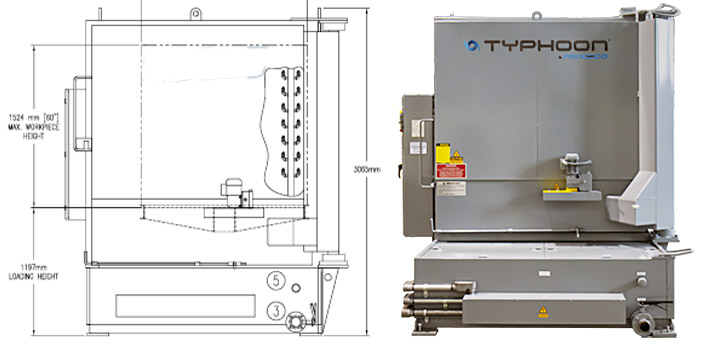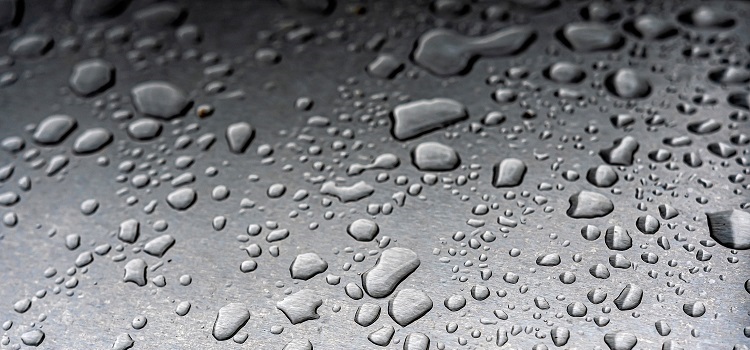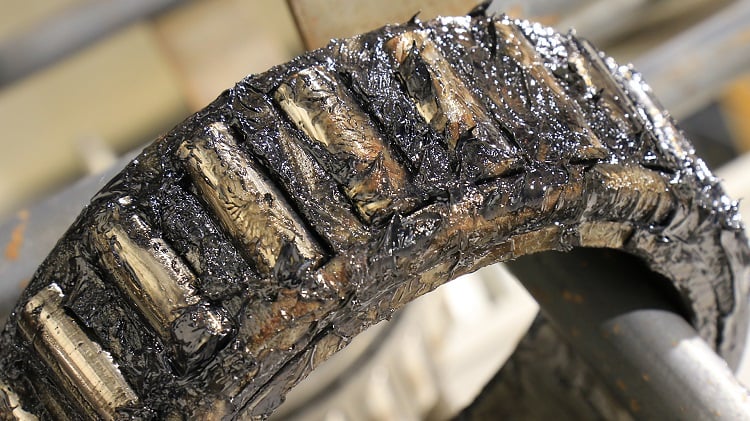There are different industrial cleaning methods, and most involve either solvent or aqueous cleaning. Chemical solvents are very effective at dissolving lubricants and tenacious soils such as carbon and baked-on grease. Solvents, however, pose environmental risks and can cause health issues. Therefore, strict government regulations control them. Our focus will be on aqueous cleaning, used for decades, primarily in metal cleaning. Read more on our blog – Aqueous Cleaning Fundamentals.
DEFINING THE PROCESS REQUIRED
In addition to cleaning, the entire process required to prepare the workpiece must be considered. This process may also require rinsing, drying, and even cooling. For example, a part cleaned before laser welding will require cleaning to remove contaminants, rinsing to remove any chemical residue from its surface to ensure a good weld quality, and a blow-off/drying sequence to remove moisture at the weld site. Parts washers can be configured to provide all these steps, which are sometimes referred to as “stages.”
Once the process has been defined, the geometry of the parts and the level of cleanliness required help determine the appropriate equipment and cleaning method.
For parts with complex geometries, immersion can improve the cleaning of unexposed surfaces and cavities. Combining immersion with ultrasonics can increase the cleaning performance even more.
Power flushing, which forces cleaning solution at high flow into internal cavities such as oil galleries, may also be necessary to meet cleanliness.
The production rate will also dictate the type of equipment. For example, a batch washer is likely the best solution for small-series production, while for high-production programs, a continuous washer, such as a conveyor-style washer, may be a better choice.
AUTOMATIC LOADING AND PART FIXTURING
Quite often, loading parts manually is all that is required, and most parts washers allow for such. However, with the rising demand for more automation, automatic loading and unloading may be required. Some washer designs are better suited for automatic loading, so knowing how the parts will be loaded early in the process is essential.
Equipping the machine with a PLC and HMI is necessary to control every step of the cleaning process and to interface with upstream and downstream automation.
Fixturing is often used to orient a workpiece to promote direct spray impingement on certain features or to provide better drainage to diminish liquid drag-out or to improve drying. Fixturing the parts can also allow for precision positioning, which is required by pick-and-place automation and when there is a need to target critical features.
With such precise positioning of the parts, it is possible to add dedicated spray or blow-off nozzles, power-flushing mechanisms, vision systems, etc. Good fixture design, as it relates to cleaning, requires minimal contact with the workpiece so as not to interfere with cleaning, and to avoid marking machined surfaces.
SELECTING THE APPROPRIATE FILTRATION
Cleaning process requirements that have gravimetric or particle-size requirements necessitate the need for solution filtration. Filtration will remove and entrap particles that could otherwise adhere to the workpiece. Selecting the proper filtration is essential to achieving the desired cleaning results but bear in mind that the finer the filtration (mesh size), the higher the equipment and operating cost.
Different types of filter media exist, but two are predominant in aqueous cleaning: bags and cartridges. Bags represent the most economical option for less stringent cleanliness applications, and cartridges are used for the most demanding applications.
To be effective, the entire flow of the pump (cleaning solution) must be filtered to ensure that the liquid that contacts the workpiece is free of contaminants. Accordingly, higher flow may impact the total filtration equipment cost.
Different filter media micron ratings can be used to ensure cleanliness compliance. However, a smaller micron rating will require more frequent change-out as the filter will more readily clog. This frequent changeover can prove costly, especially with cartridge filters. It is possible to install less costly, larger micron bag filters upstream of the cartridge filters to increase their life.
Another common feature in high-production environments is the installation of two sets of filter housings in parallel with diverter valves. Such a configuration allows the operator to change out the spent filter media without stopping the washer.
RINSING: A KEY STEP TO COMPLETE THE CLEANING PROCESS
Rinsing quality is an essential step in the cleaning process. Rinsing dilutes the remaining chemical substances remaining on the parts. Rinsing varies in its effectiveness – from a slight removal of cleaner to the complete removal to ensure downstream-process integrity. Most washers offer a freshwater rinse, typically fed by the plant water supply through low-flow hollow-cone spray nozzles. The effectiveness of this type of rinse depends on the length of the cycle and on the understanding that the spent water must be either disposed of or used as a make-up for evaporation of the wash solution.
Recirculating rinses are more efficient and ecological. The water is reused and sprayed using a pump providing higher flow and pressure than the plant water, which is more effective at rinsing away chemical residues. Typically, continuous processes use recirculating rinses where water conservation is called for.
For more information on rinsing, refer to the following blog posts:
- Recirculated Rinse: An Option Worth Considering for Turntable Parts Washers
- Going Green in Metal Finishing
- The Importance of Rinsing in Metal Cleaning and Surface Treatment
THE IMPORTANCE OF DRYING FOR PRODUCT FINISHING OR EFFECTIVE THROUGHPUT
For the most part, aqueous cleaning usually occurs from 120˚F to 185˚F (49°C to 85°C), and workpieces tend to flash dry if given enough time.
Shop compressed air is often used to blow off excess liquid. While more costly to operate continuously, compressed air nozzles use higher pressures and effectively remove excess moisture from blind holes or cavities.
Centrifugal blowers and air knives are extremely useful in removing excess liquid and facilitate drying. Moreover, heat can also be added to accelerate evaporation. Regenerative blowers are commonly employed for such applications. They offer two main advantages: they provide adequate volumes at pressures above 50 inH2O and raise the air temperature through the heat of compression.
Convection dryers utilize heated air for drying. Convection heating offers consistent, even heating that dries parts quickly, provided there is no entrapped liquid. Operating temperatures typically vary from 120˚F to 250˚F (49°C to 121°C), and the air is recirculated, which is very efficient.
VACUUM DRYING
As used in metal cleaning, vacuum drying dries workpieces quickly, gently, and with energy efficiency. The liquid entrapped in the workpiece is evaporated by pressure reduction and extracted as vapor.
In electric motor and generator cleaning, vacuum drying effectively removes entrapped moisture from the electrical windings. See our white paper on this subject.
In continuous processes, vacuum drying can also be used for downstream operations that require thoroughly dry parts. Moreover, during the vacuum drying process, the workpiece is also cooled through heat transfer as evaporation occur
For more information on drying after cleaning, read our white paper on this subject.
Aqueous cleaning has been a widely used method of industrial parts cleaning for many years, with several options to consider. Determining the type of parts washer you need will depend on many factors, such as whether the workpiece requires rinsing, drying, or cooling after cleaning; whether your preference is for manual or automatic loading; whether fixturing is a consideration; and what type of filtration will best meet the cleaning process requirements.



